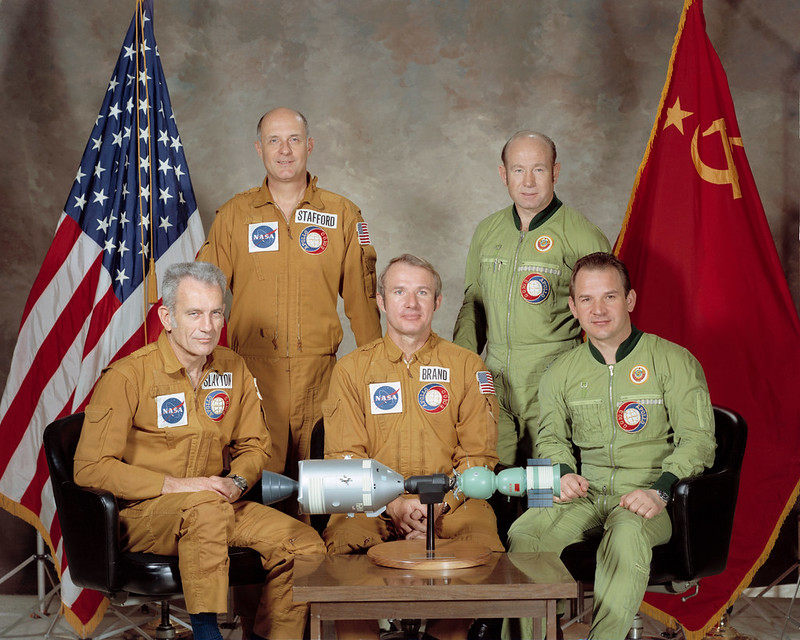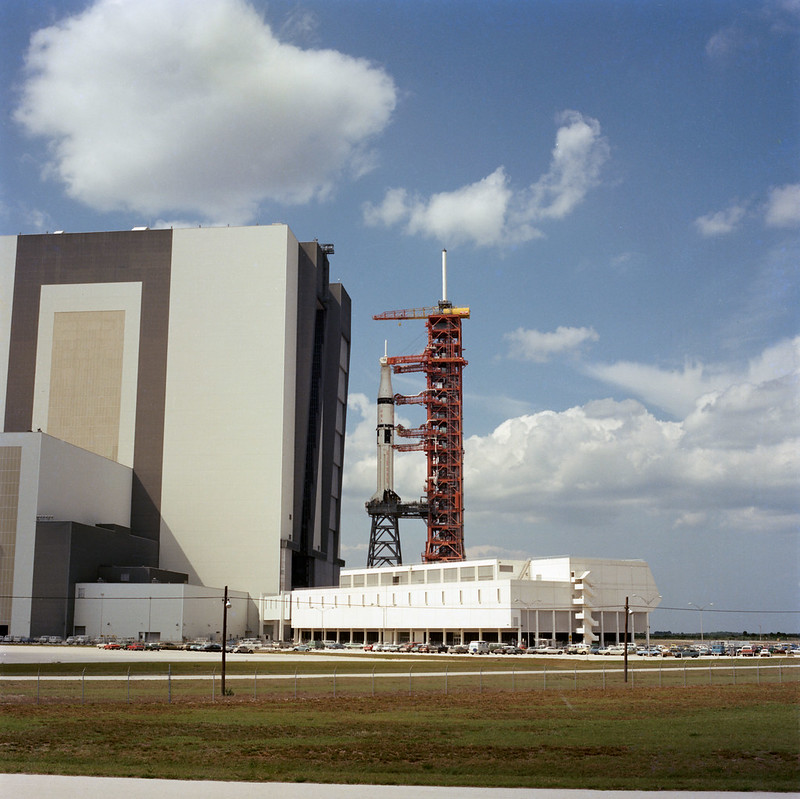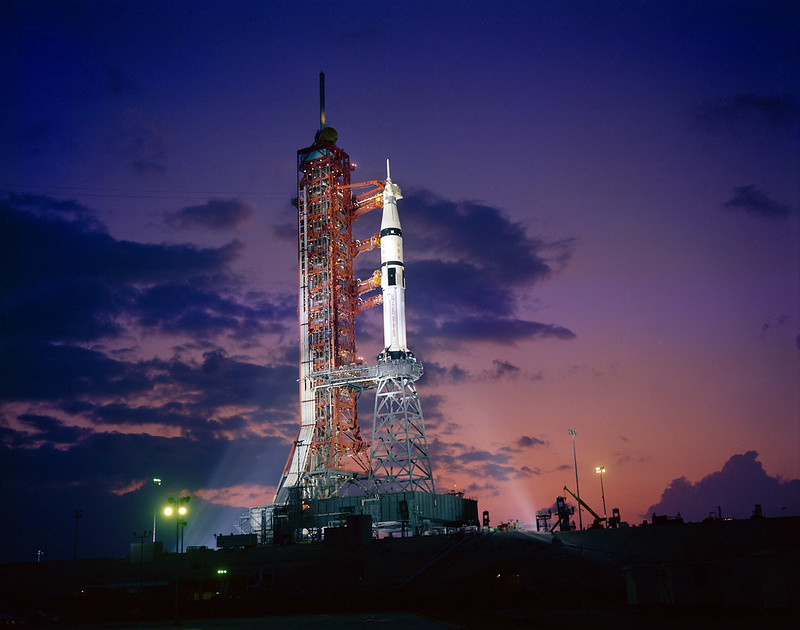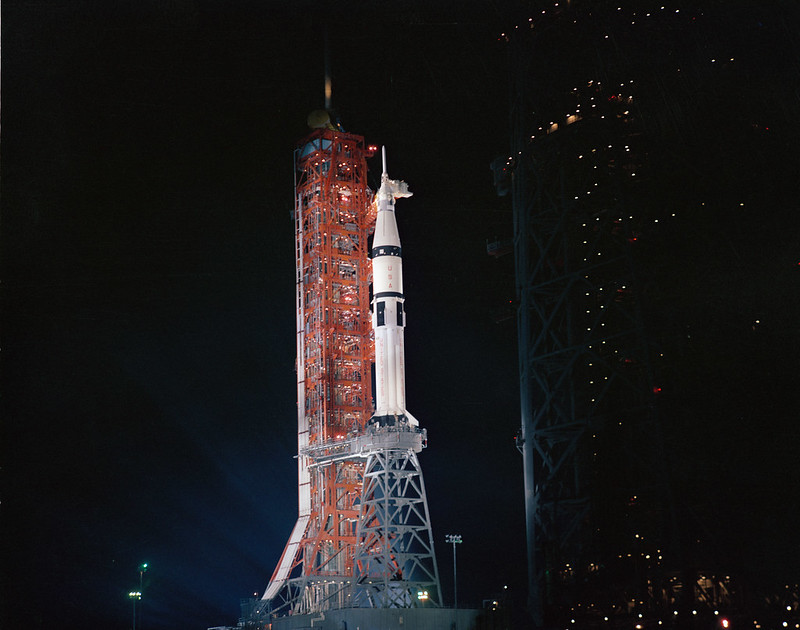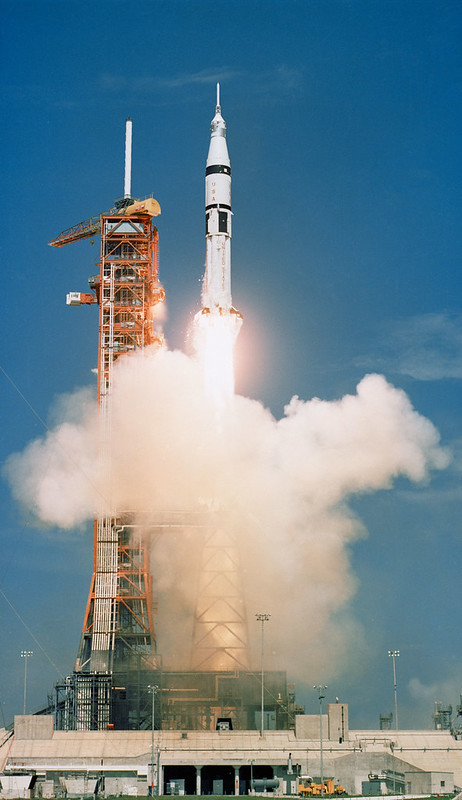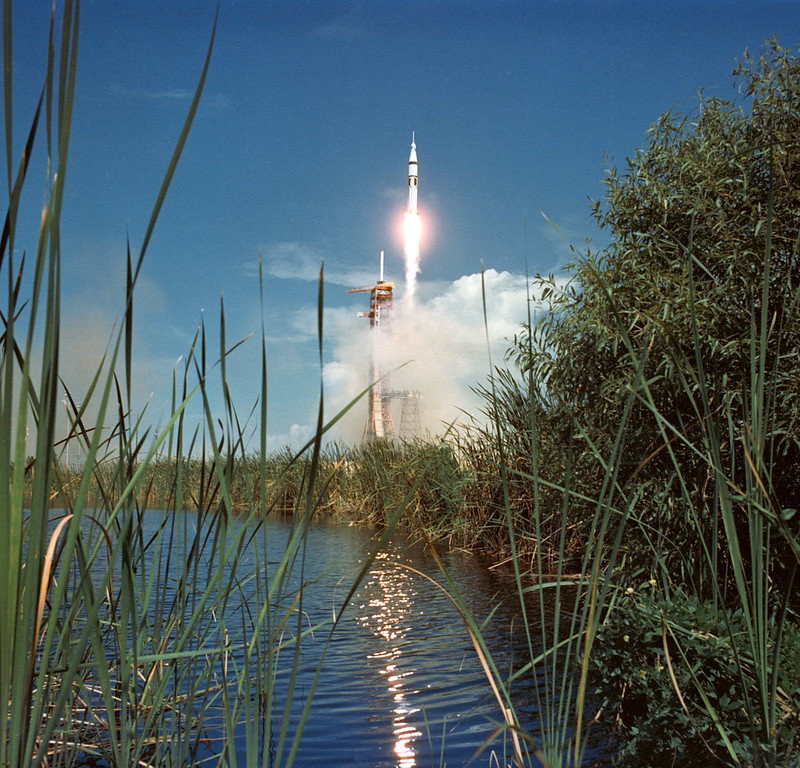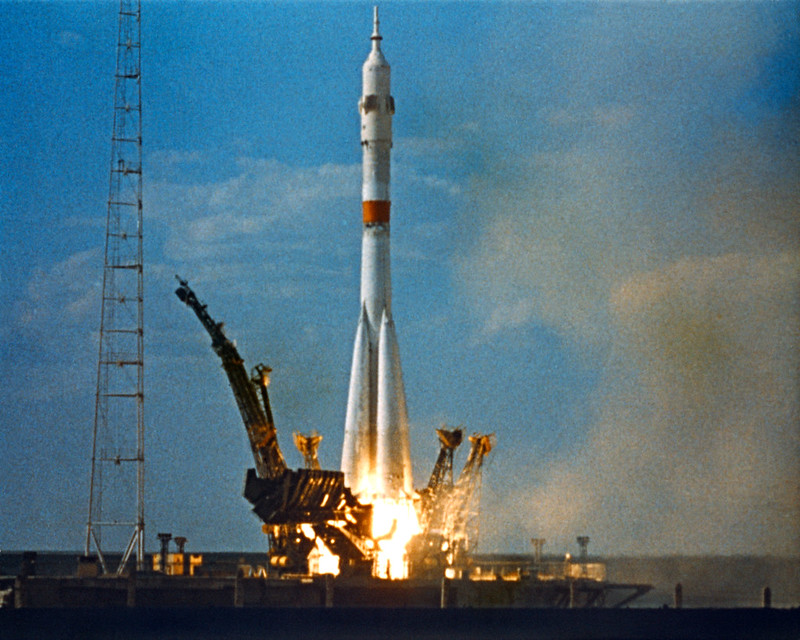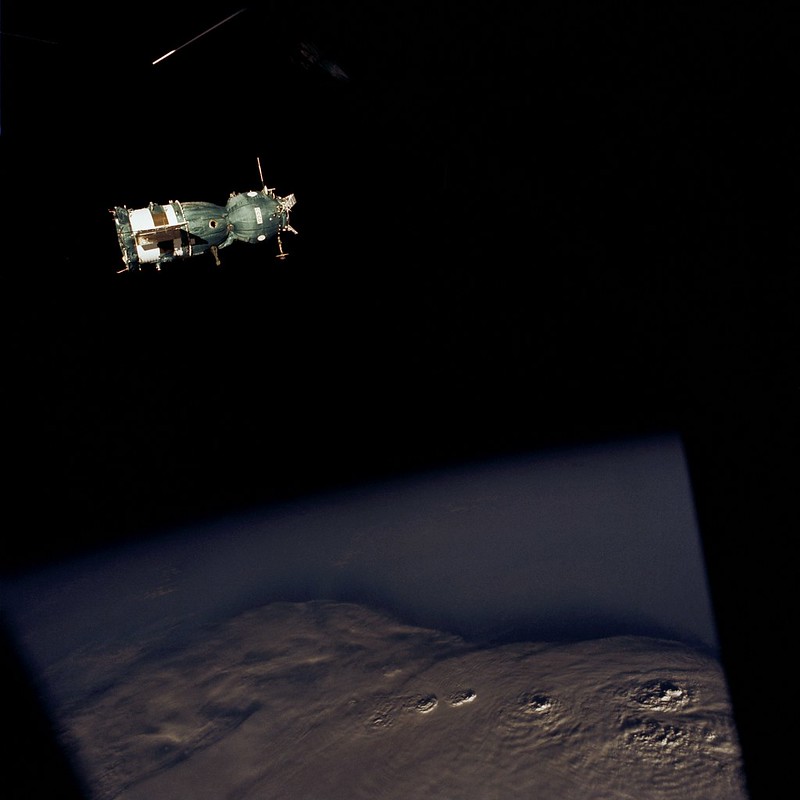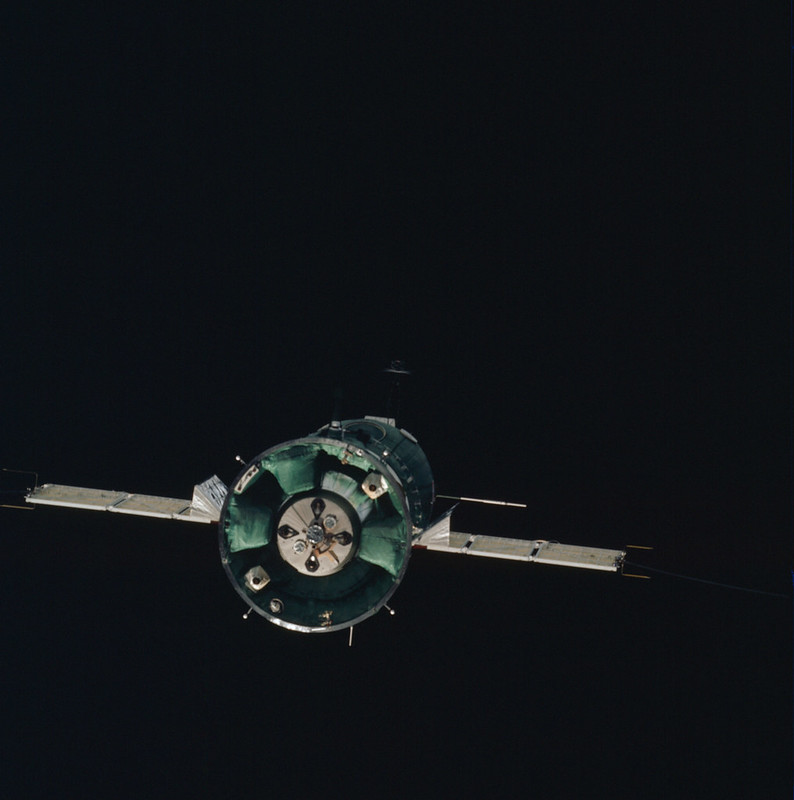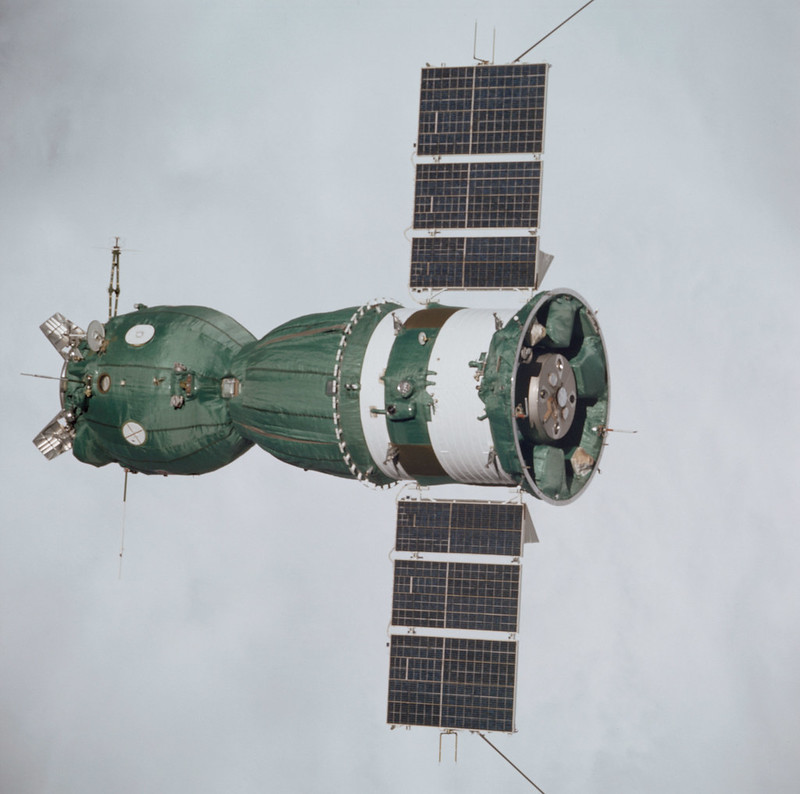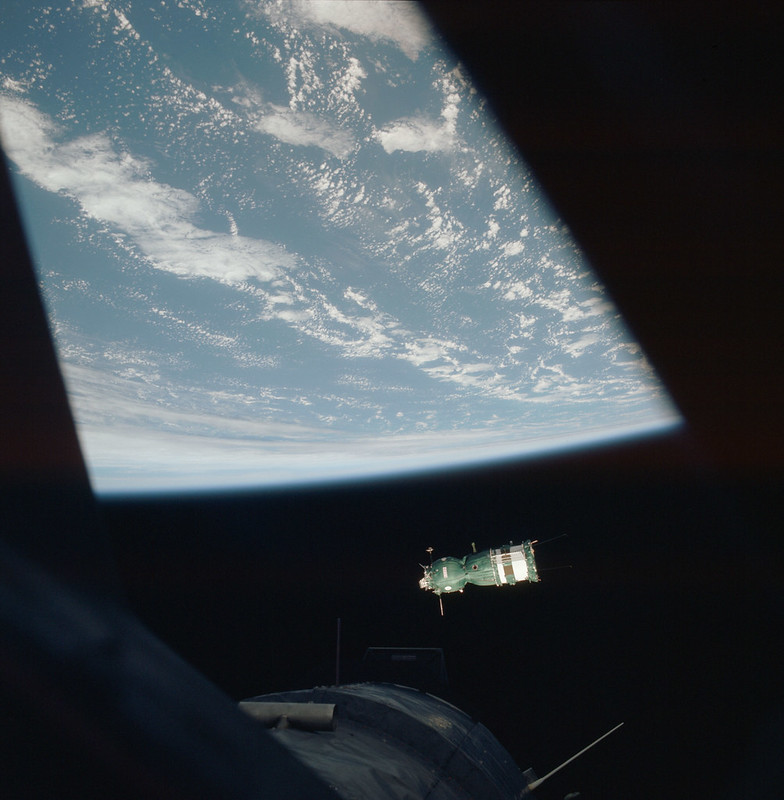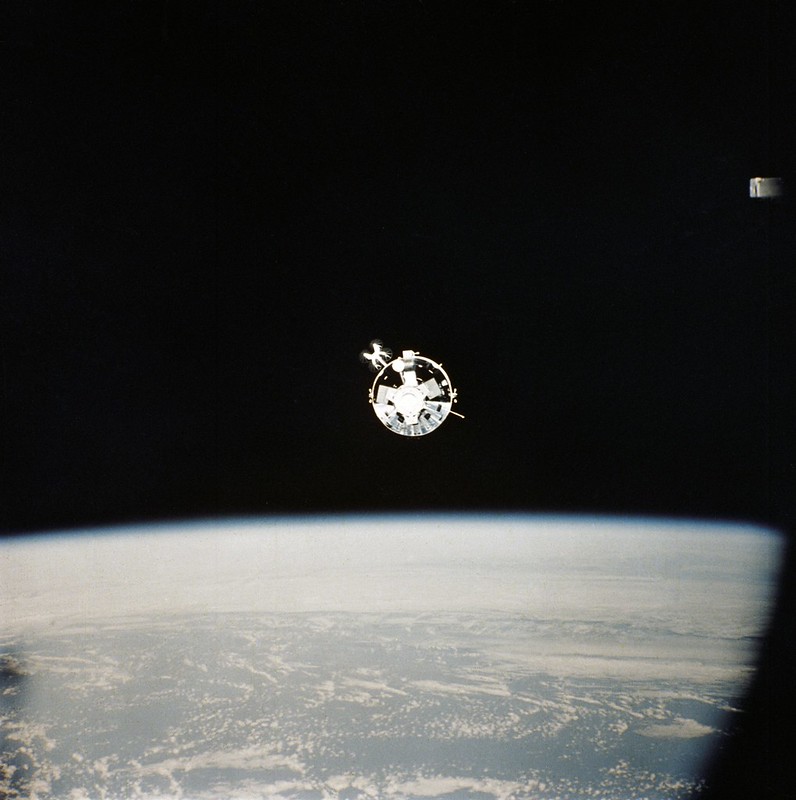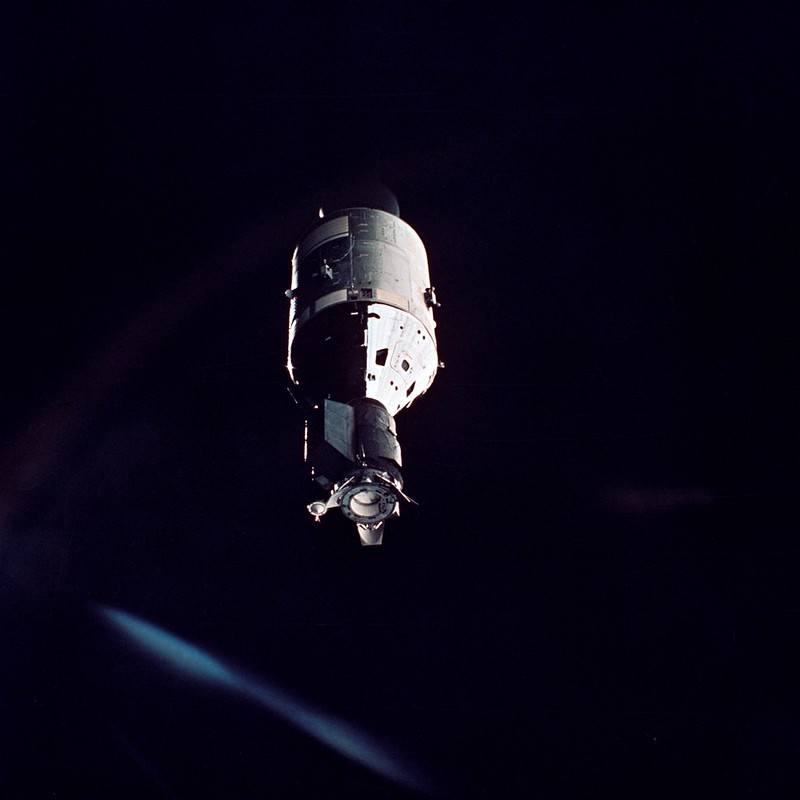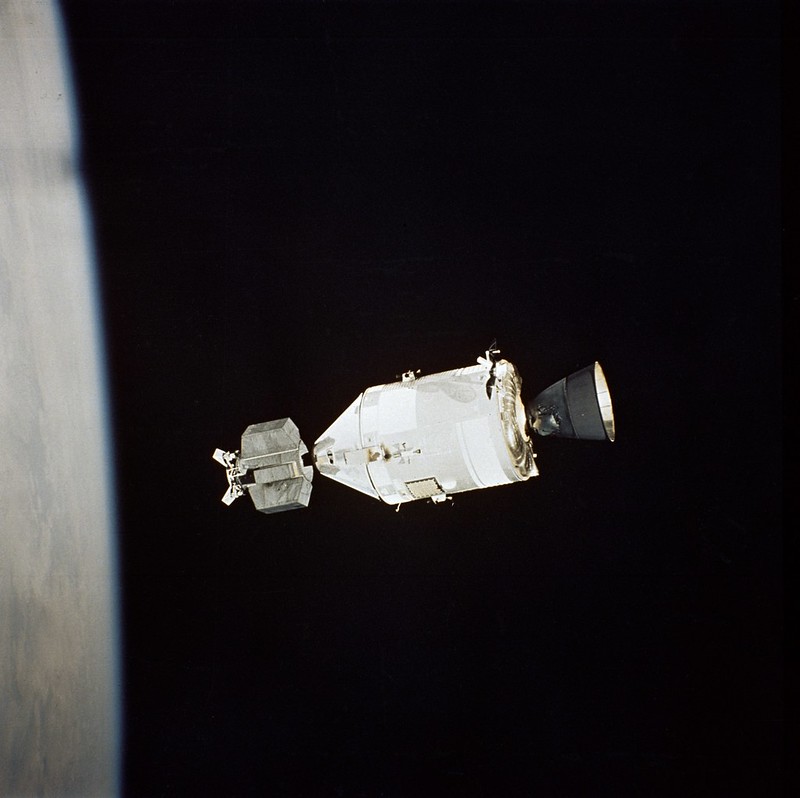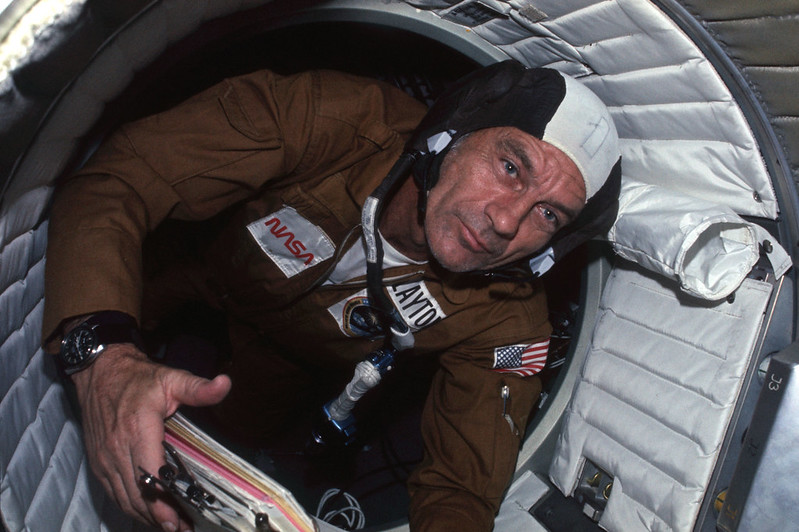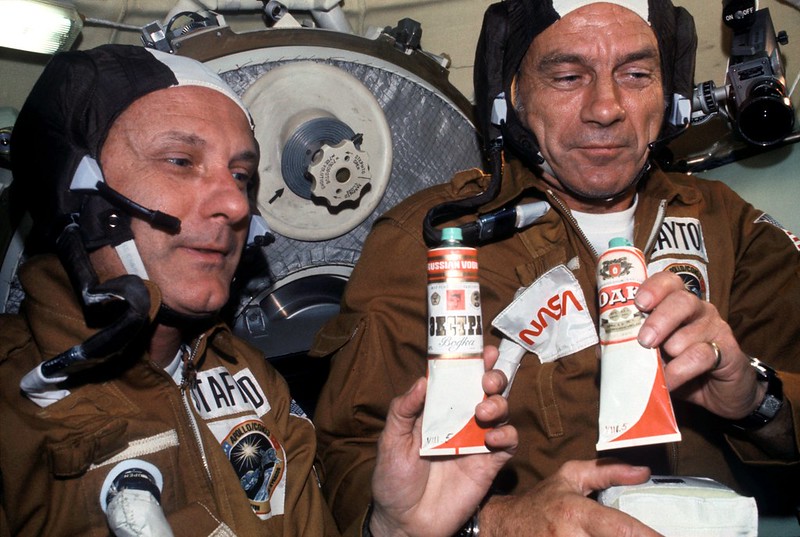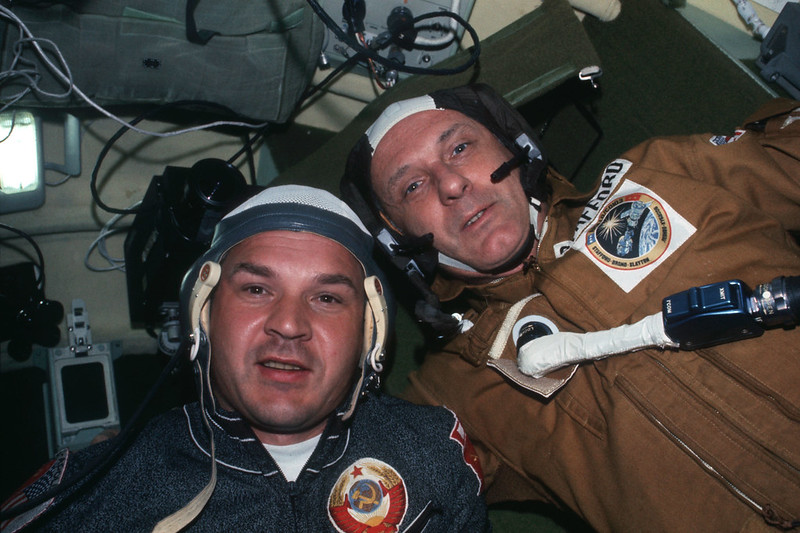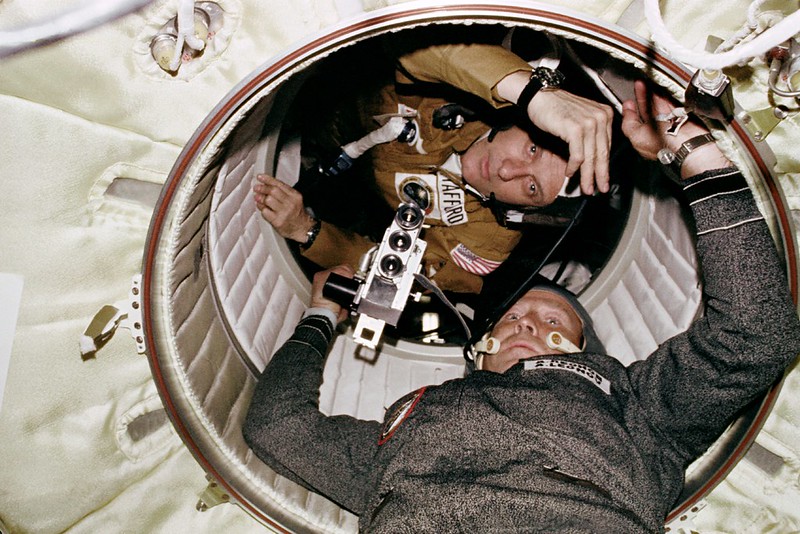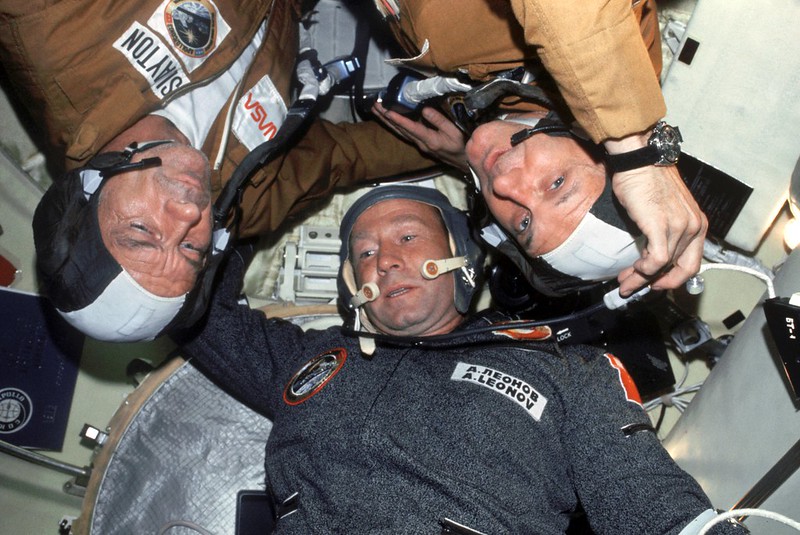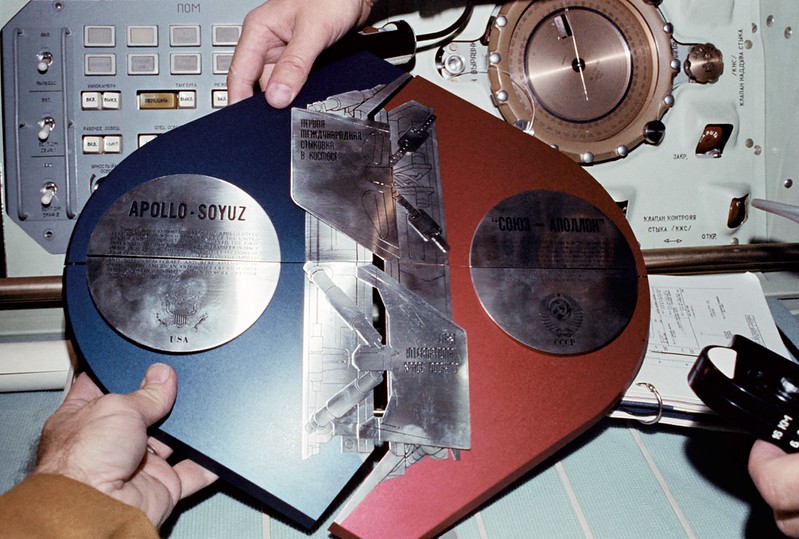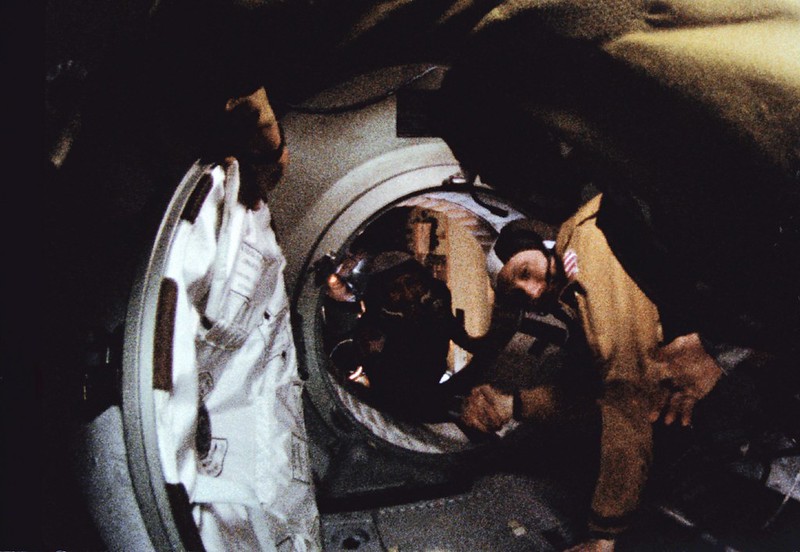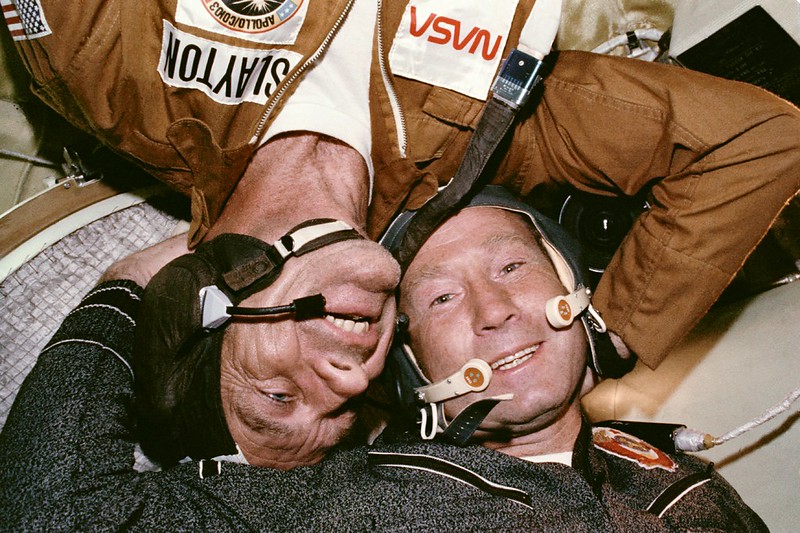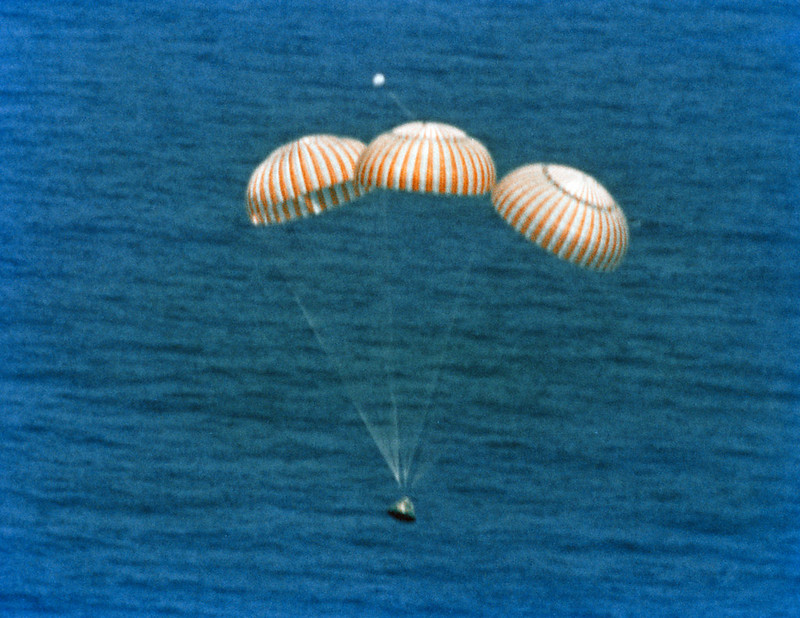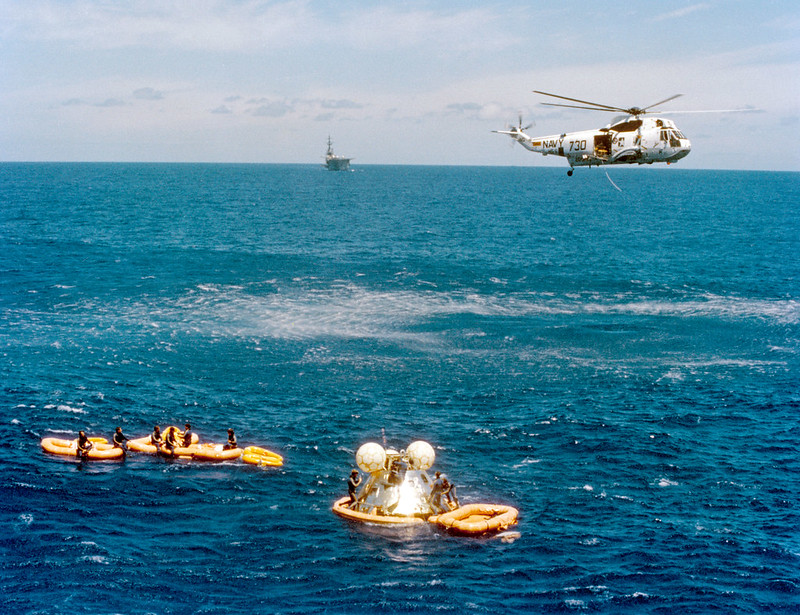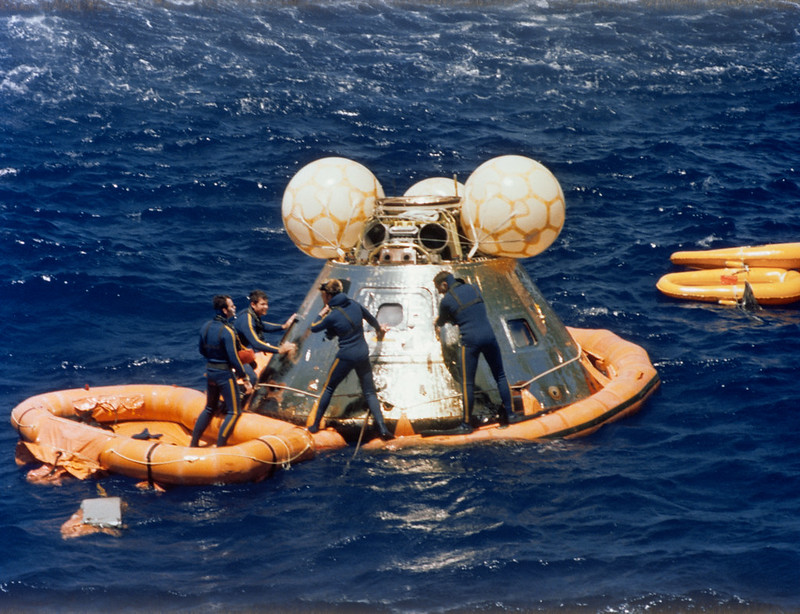Apollo-Soyuz Test Project Fact Sheet
By Cliff Lethbridge


Apollo-Soyuz Test Project (NASA Code: ASTP/AS-210/CSM-111)
Launch Date: July 15, 1975
Launch Time: 3:50:00 p.m. EDT
Launch Site: Launch Complex 39, Launch Pad 39B
Launch Vehicle: Apollo-Saturn IB AS-210
Command Service Module: CSM-111
Command Module Call Sign: None
Crew:
Thomas P. Stafford, Commander
Vance D. Brand, Command Module Pilot
Donald K. “Deke” Slayton, Docking Module Pilot
Back-up Crew: Bean (C), Evans (CMP), Lousma (DMP)
Mission Duration: 9 Days, 1 Hour, 28 Minutes, 24 Seconds
Number of Orbits: 145
Recovery Date: July 24, 1975
Recovery: U.S.S. New Orleans (Pacific Ocean)
Joint Mission: Soyuz 19
Launch Date: July 15, 1975
Launch Time: 8:20:10 a.m. EDT
Crew:
Aleskey A. Leonov, Commander
Valeriy N. Kubasov, Flight Engineer
Back-up Crew: Filipchenko (C), Rukavishnikov (FE)
Mission Duration: 5 Days, 22 Hours, 30 Minutes, 54 Seconds
Landing Date: July 21, 1975
Landing Site: Russia
Mission Summary:
The Apollo-Soyuz Test Project (ASTP), although only a one-flight program, marked the first international manned space flight.
It was conducted by the only two nations engaging in manned space flight, perhaps symbolically ending a nearly 20-year bitter, hard-fought and expensive space race.
Casting political differences aside temporarily, the world looked on as two enemy superpowers successfully completed the first joint on-orbit manned space operation. This was, perhaps, the most visible example of what President Richard M. Nixon labeled as “detente”.
ASTP negotiations began in 1970, and an agreement for ASTP flight operations were incorporated into the “superpower summit” agreement of May, 1972.
ASTP was designed primarily for the purpose of establishing and testing space-based rescue techniques needed by both the U.S. and U.S.S.R. manned space flight programs.
Scientific observations were also conducted, and logistics involved in carrying out joint space operations between the two nations were developed and refined, paving the way for future joint operations carried out during the Space Shuttle program.
As the U.S. and Soviet space capsules were not compatible, the first major task was the development of a new docking module. The module, with a Soviet configuration on one side and a U.S. configuration on the other side, would be launched aboard the manned ASTP Saturn IB booster.
The docking module also acted as an airlock to facilitate a meeting of crew members during docked operations. It also needed to be a transfer facility, allowing astronauts and cosmonauts to become accustomed to the atmosphere of each other’s space vehicles.
The U.S. spacecraft employed a pure oxygen atmosphere, while the Soviet spacecraft used a high-pressure oxygen and nitrogen mixture. Should the cosmonauts attempt an immediate transfer to the U.S. spacecraft, they would suffer from the “bends” very quickly.
Some differences were not easily resolved. One was language. The cosmonauts and astronauts agreed to communicate with their respective mission controllers in their native tongue. In-flight communications between the crews would be handled in any way deemed practical at the time.
National pride also came into play. The U.S. referred to this mission as the Apollo-Soyuz Test Project. Naturally, the Soviets referred to it as the Soyuz-Apollo Test Project.
The Soyuz 19 spacecraft was launched first. The Apollo ASTP was launched about seven hours later.
Using techniques perfected during previous manned space flights, the Apollo spacecraft separated from the S-IVB booster, turned around, and docked with the ASTP docking module still attached to the S-IVB.
The Apollo spacecraft then chased the Soyuz spacecraft to a rendezvous, completing a docking at 12:10 p.m. EDT on July 17, 1975. The Soyuz 19 spacecraft was on its 35th orbit, while the Apollo spacecraft was on its 29th orbit.
Astronauts Stafford and Slayton entered the docking module and began adjusting the air pressure inside. Then, in an event broadcast live on television to the world, the two cosmonauts entered through their side of the docking module, shaking hands with the awaiting astronauts.
The two crews conducted joint experiments, shared each other’s accommodations and meals and participated in a variety of press conferences and other live television broadcasts.
Messages were relayed from the crews directly to U.S. President Gerald Ford and U.S.S.R. Premier Leonid Brezhnev.
The two spacecraft remained docked for two days, then undocked at 8:12 a.m. EDT on July 19, 1975. The two spacecraft docked again for practice purposes at 8:34 a.m. EDT and undocked for the last time at 11:27 a.m. EDT, also on July 19, 1975.
Soyuz 19 landed in Russia at 6:48 p.m. EDT on July 21, 1975. The Apollo spacecraft remained in space three additional days, conducting additional on-orbit experiments.
Splashdown occurred at 5:18 p.m. EDT on July 24, 1975. Tragedy was averted by the quick-thinking astronauts. An astronaut error resulted in a failure to turn on the spacecraft’s Earth Landing System at the correct time.
As a result, fumes from fuel being dumped overboard after splashdown entered the capsule. The fumes caused astronaut Brand to lose consciousness. However, the crew had the presence of mind to don their oxygen masks, which in all probability prevented what could have been the first U.S. fatalities during an active mission.
SELECTED NASA PHOTOS FROM ASTP
